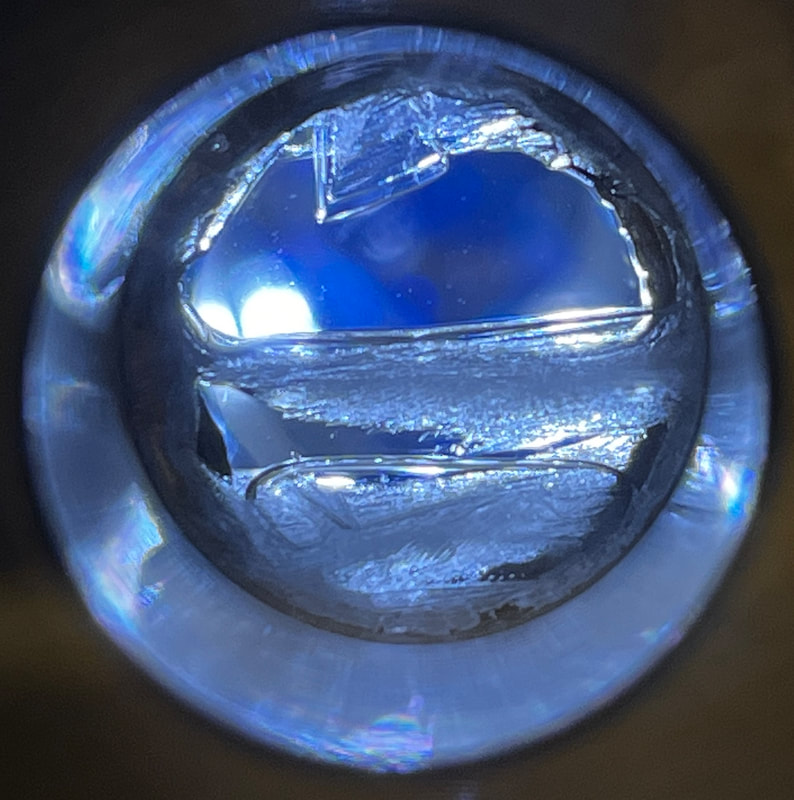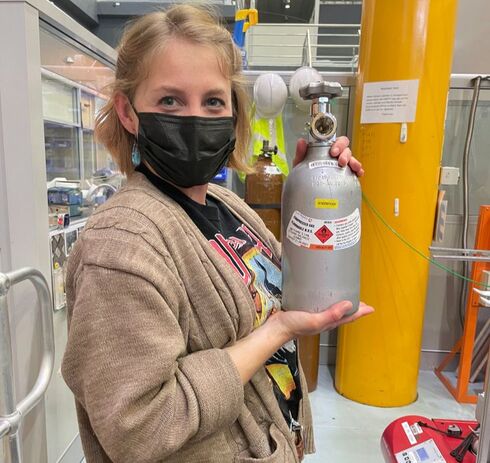Experimentally Exploring the Phase Behavior of Titan’s
Lacustrine Environment
|
The FINESST Fellowship has provided me with the opportunity to explore how certain minority species impact Titan's lake environment. Propane (C3H8) and ethylene (C2H4) are among the most common hydrocarbons produced from the methane photochemistry occurring in Titan's atmosphere. These molecules may find their way to the lakes either by directly falling in or through indirect means via fluvial processes.
The goal of the study is to add 0–10% C3H8 to methane-ethane-nitrogen (CH4–C2H6–N2) system—and later add C2H4 to the CH4–C2H6–C3H8–N2 system—using Raman spectroscopy to determine the effect of the minority species on the phases and phase transitions of the CH4–C2H6–N2 system. These experiments will ideally provide insight into the processes occurring on the surface and in the presence of liquids. Preliminary work included mapping the CH4–C2H6 binary phase diagram at low temperatures and pressures and investigating the three solid phases of C2H6 that occur between 89 and 90 K. Given Titan's surface temperature range of 89-95 K, it is interesting to think about what impact these solid phases could have on the surface. [DOI]. |
Tuning DraGNS' Interpretations to Titan's Expected
Surface Environment
|
As a Dragonfly Student and Early Career Investigator, I am working with Drs. Patrick Peplowski (JHU Applied Physics Lab) and Ann Parsons (NASA Goddard Space Flight Center) to establish benchmarks for models of various Titan surface environments and to build our intuition for the DraGNS (Dragonfly Gamma-ray and Neutron Spectrometer) response to the possible elemental combinations on Titan.
The Dragonfly mission marks the first time a gamma-ray and neutron spectrometer suite will be sent to a water-dominated world. Previously, this instrumentation had only been used to study terrestrial bodies, where the focus was on detecting heavier rock-forming elements and hydrogen (an indicator of the presence of H2O and OH). Given the marked difference between rocky and icy worlds, we have created Titan surface simulant samples and are performing a series of experiments with DraGNS-like instrumentation to get a glimpse into this unique environment before Dragonfly's arrival to the satellite in the mid-2030's. For more information on this project, check out the LPSC 2023 abstract. |
Monitoring the Effects of Methane on the Solid Phases of Ethane with Neutron Diffraction
|
As mentioned above, pure ethane is known to have three solid phases at conditions relevant to Titan's surface. Phase II has been somewhat elusive in its metastability when cooling and narrow temperature range of approximately 89.7-89.9 K. While forming phase II when cooling has still eluded us, we have seen evidence of it in the Raman spectra while warming and have gotten further confirmation through neutron diffraction.
Teaming up with Dr. Helen Maynard-Casely of the Australian Nuclear Science and Technology Organisation (ANSTO), we continued with the use of neutron diffraction (with the wonderfully named WOMBAT instrument) to study the effects that small quantities of methane may have on the solid phases of ethane. Our primary questions are: 1) Does the addition of methane alter the temperature at which the solid-solid transitions occur? 2) Do we see the presence of phase II in both cooling and warming sequences, or at all? Results are still pending, so stay tuned! |



